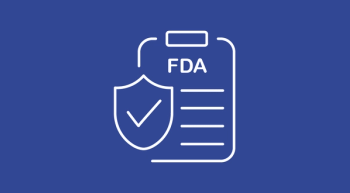
How to Manage ICANS in Patients With Hematologic Cancers
Nurses must stay up to date on novel agents and their toxicities to properly monitor for and manage immune effector cell-associated neurotoxicity syndrome.
When monitoring for immune effector cell-associated neurotoxicity syndrome (ICANS), stemming from treatment with CAR T-cell therapy and bispecific antibodies for patients with hematologic cancers, it is imperative to stay up to date on these novel agents and their associated toxicity profiles to properly manage adverse effects (AEs).
“Awareness of the symptoms and AEs associated with these treatments, and competence in selecting the appropriate pharmacologic management, is essential for the resolution and optimal recovery of patients,” Beth Faiman, PhD, MSN, APN-BC, BMTCN, AOCN, FAAN, FAPO, a nurse practitioner at the Cleveland Clinic Taussig Cancer Institute in Ohio, said in a presentation during the 9th Annual School of Nursing Oncology, an event hosted by Physicians’ Education Resource®, LLC.1
ICANS stems from neurologic toxicities that can occur anywhere from days to weeks following these therapies, and can include the following signs or symptoms:
- Hallucinations
- Altered wakefulness
- Confusion
- Headache
- Encephalopathy
- Seizures
- Tremors
- Facial nerve palsy
- Apraxia
- Ataxia
“I see a lot more of a mild headache than I see fulminant-like confusion or [patients who] can't write [their] name,” Faiman added.
If ICANS is suspected, patients undergo neuroimaging, generally via MRI, and a diagnostic lumbar puncture for opening pressure and
Faiman walked through an example of an immune effector cell-associated encephalopathy (ICE) screening tool, which assesses whether or not treatment has led to encephalopathy. Patients are asked about the following, and scored accordingly:
Assessment
Notes
Points
Orientation
Orientation to year, month, city, hospital
4
Naming
Ability to name 3 objects
3
Following commands
Ability to follow simple commands (eg point to clock, pen, button)
1
Writing
Ability to write a standard sentence
1
Attention
Ability to count backwards from 100 by 10s
1
Total points
10
Depending on the assessment, the score is as follows:
- 10: No impairment
- 7-9: Grade 1 ICANS
- 3-6: Grade 2 ICANS
- 0-2: Grade 3 ICANS
- 0 due to patient unarousable and unable to perform ICE assessment: Grade 4 ICS
Neurotoxicity, of which the exact mechanism is unknown, can occur in the absence of, concurrently with, or
Other Long-Term CAR T-Cell Toxicities
Other considerations when patients are undergoing
Institutional guidelines should be in place for management of more long-term toxicities, such as B-cell aplasia/hypogammaglobulinemia, cytopenias, and infections.
“You can see some B-cell aplasia. If [a patient with hematologic cancers has] been heavily pretreated, [they] can get more cytopenias, [they] can have immune infection resilience—so they get hypogammaglobulinemia and increased atypical infections,” Faiman explained. “You want to monitor for that, but that tends to resolve with CAR T-cell therapies.”
For B-cell aplasia/hypogammaglobulinemia, patients should have monitoring of their immunoglobulin (IgG) levels post treatment, and, similarly, blood counts should be monitored after therapy for cytopenias. Grade 3 or higher cytopenias that are unresolved by day 30 after treatment occur in a significant proportion of patients. Infections, Faiman noted, need to be managed in accordance with institutional policies and in consultation with infectious disease specialists.
“[For B-cell aplasia], we tend to recommend—and this is based on the transplant cellular therapy infection guidelines as well as NCCN—to give [intravenous] IgG right before they go to CAR T-cell therapy, and then monthly until their IgG levels are over 600 [μg/L] consistently,” Faiman said.
Antimicrobial prophylaxis may vary across institutions, but at the core, Faiman recommended continuation for at least 6 months, depending on a patient’s prior history of shingles. CD4 counts should also be measured at 6 months and discontinued only when the CD4 count is above 200.
All patients should have annual influenza vaccines, posttransplant vaccines to resume 12 months after therapy, and COVID-19 vaccinations 3 months from CAR T-cell therapy.
Overall, Faiman noted that the key concepts for AE prevention for those on bispecific antibodies are premedication, step-up dosing, subcutaneous dosing, growth factor support, and antimicrobial prophylaxis.
However, because talquetamab (Talvey), is a GPRC5D- and CD3-targeting bispecific antibody, Faiman explained that it has its own unique set of toxicities and dermatologic AE management:
- Dry skin: Heavy moisturizers
- Hand and/or foot peeling: Ammonium lactate 12% lotion to soles and palms twice daily
- Nail thinning and peeling: Nail hardeners, topical vitamin E oil, and triamcinolone 0.025% ointment
- Pruritus, maculopapular rash, and injection site reaction: Loratadine 10 mg orally daily for 3 to 5 days post talquetamab dose and triamcinolone cream 0.1% twice daily.
Grade 3 rash should be treated with methylprednisolone taper and betamethasone 0.05% cream, and dose holds should be considered for other grade 3 dermatologic AEs. Dermatology consults may be helpful as an early strategy, she added.
Oral talquetamab-related toxicities and their mitigation strategies include:
- Taste changes: Sour citrus or candies before meals are recommended.
- Dry mouth: Over-the-counter dry mouth rinse, gel, and spray are recommended. Advise patients to avoid hot beverages.
- Dysphagia: Eating habit modifications, including taking small bites, eating upright, and sips of beverage with food, can help manage symptoms.
Overall, education and emotional support are key strategies for managing oral toxicities, she said.
Editor’s Note: This is part 3 of a multi-part series of Beth Faiman’s presentation at the 9th Annual School of Nursing Oncology.
References
Faiman B. Updates in novel therapies across hematologic malignancies. Presented at: 9th Annual School of Nursing Oncology; August 9, 2025; Nashville, TN.
Newsletter
Knowledge is power. Don’t miss the most recent breakthroughs in cancer care.
















































































